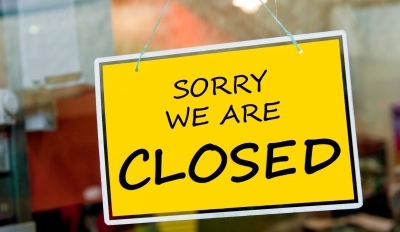Yes, coworking spaces do close. Although, frankly, it is a lot easier to find articles and releases broadcasting openings — lots and lots of openings. According to Deskmag’s most recent calculations, 4.5 coworking spaces open each work day. But the flip side is an apparent 15% attrition or, put another way, one in nine spaces will fail.
Why do coworking centers fail? Deskmag’s 2012 study turned up four reasons which seem to resonate in one form or another throughout the industry — that is, when we could find articles about why coworking spaces fail.
We ultimately uncovered a grand total of three articles, and below are the primary reasons cited in the Deskmag article, with some added thoughts and input.
1. Coworking space as a sideline or secondary project: When people take up coworking as a sideline to their primary business, the lack of 100% dedication can dismantle even the best of plans. Treehouse, a coworking space in Brooklyn, New York, was the brain child of Andrew Personette and Matt Tyson, the founders of an eco-friendly furniture company, EcoSystems. Their business happened to be in a building with some extra space. What seemed like a simple and natural extension, proved overwhelming and ultimately the demise of Treehouse. Andrew admitted that, if he tried this venture again, he would dedicate at least one person completely to the project, so that they could operate without distractions of any kind.
2. Target clients who won’t pay: Sometimes, what feels like the right target client for a coworking space, just won’t pay for it. Many coworking space owners make a huge effort to get some initial buzz going by hosting some preliminary events and classes to get the community involved. That’s how Heather O’Sullivan Canney promoted her SoCo Studio, an entrepreneurial launchpad in North Carolina. “As people came in for events and classes, they all loved the location and the vibe and décor. But they also seemed to think that they should be able to use it free.” This value mis-match can be very difficult to reconcile. Andrew Personette had the same issue at Treehouse, by the way. Their target clients simply didn’t want to pay for permanent membership.
3. Inflexible business model: Often a coworking space will open with its pricing scheme firmly entrenched, only to find that clients want a variation of that model. If the business model is not created with ‘turn-on-a-dime’ flexibility, the plan and the center may not survive. At Treehouse, Andrew Personette began getting requests to use more of the shared spaces, rather than pay to reserve specific areas of the floor. They were not able to adjust their business model or floor plan quickly enough to accommodate the demand; but another space about a block away was. That center remains in business. According to a post on Quorum from Jeannine van der Linden, Owner of Kamer52, “You have to be prepared to alter your business model as the needs arise, to develop services and be flexible in how the space is used. Begin your conversations about change with a ‘Why not’” rather than a ‘We don’t’.”
4. No commitment from identified “communities”: This would fall under the “build it and they will come” model. Amazingly many spaces are conceived with an idea that has not been tested. The result, too often, are empty seats and pockets. This was the case at Heather O’Sullivan Canney’s SoCo Studios. Learning from her experience, Heather cautions other owners to do the ground work first; identify enough prospective clients who you know are willing to pay. “Those that do succeed have a community around them when they start,” she said.
Are there more reasons? Absolutely. We can only hope that more coworking space owners and operators will open up and share both their victories and some of their failures as well so that others can learn from their experiences.
On that note, we’ve saved the best for last. 22A/22 was a coworking/design space in Florence, Italy. While the center ultimately closed, the owners decided that, instead of skulking off with tail between legs, they’d create a slide show to share the valuable lessons learned. We will leave you with their story. Bravo to 22A/22!


 Dr. Gleb Tsipursky – The Office Whisperer
Dr. Gleb Tsipursky – The Office Whisperer Nirit Cohen – WorkFutures
Nirit Cohen – WorkFutures Angela Howard – Culture Expert
Angela Howard – Culture Expert Drew Jones – Design & Innovation
Drew Jones – Design & Innovation Jonathan Price – CRE & Flex Expert
Jonathan Price – CRE & Flex Expert












